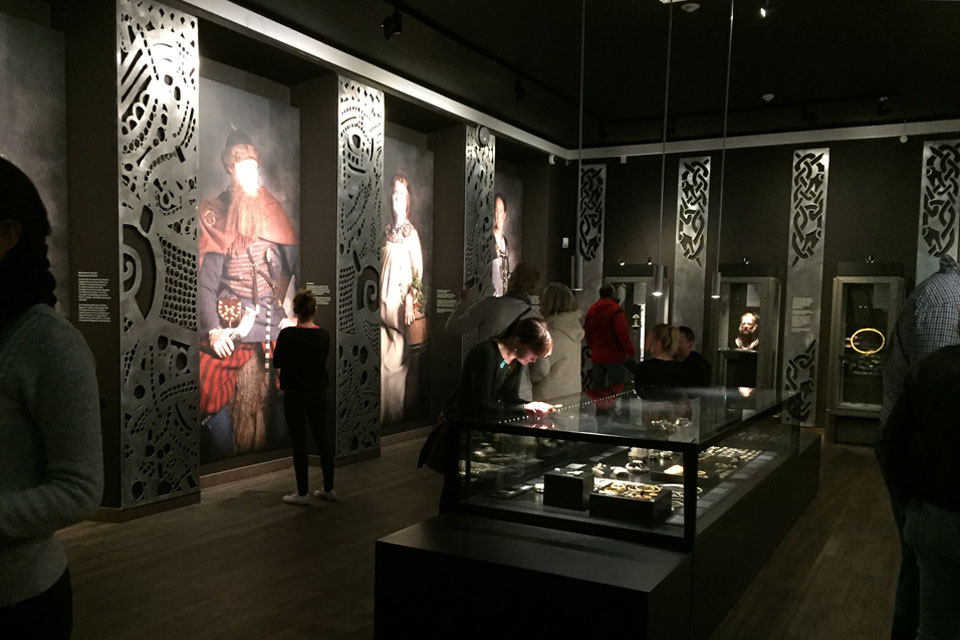For years, tourists have been puzzled by the “Absent Vikings” at the National Museum in Copenhagen. A revamp of the relevant part of the Prehistory exhibition has caused an uproar among historians and archaeologists. Is this fair?
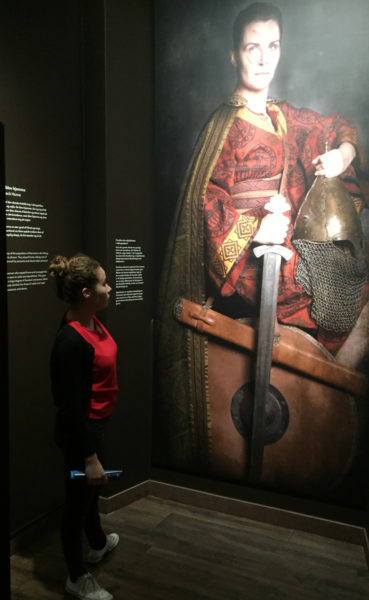
Absentee Vikings have for a long time puzzled innocent tourists visiting the National Museum in Copenhagen. Where are the Vikings, one might occasionally hear them ask the guide, who would in accordance with the official, though, unwritten policy politely answer, that in fact, Vikings were a romantic notion. In Denmark, there existed a late iron age before the Middle Ages would take over some time in the late 10thcentury, he or she would explain.
Hence, all the love lavished on the Stone Age, the Bronze Age, and the Iron Age had been allowed to peter out on the threshold of that which in a European context would be considered the High Middle Ages. To quote from the official website, the exhibition – The prehistoric period – presents the archaeological treasures from the period up to AD 1050. This, despite the fact that Denmark formally entered the written history of Europe at the end of the 8thcentury, when King Godfred according to the Royal Frankish Chronicles acted as a friend to the Saxons and a significant foe of Charlemagne. Carried out together with Norwegian and Swedish Vikings, followed the Viking conquests of the Danelaw, Ireland, and Normandy. In the end, the Danish King, Cnut the Great, ended up ruling England, Ireland, Norway and Denmark in what has been widely regarded as a mighty Northwestern Viking Empire.
But no, this story had no place at the National Museum in Copenhagen in 2005, when the exhibition for Prehistory was curated anew. We may speculate why? Was it a reflection of an on-going internecine strife between on one hand the “old” prehistorian archaeologists in Copenhagen and on the other hand, the youngsters studying Medieval Archaeology in Århus under the supervision of Else Roesdahl, known for her well-regarded book on the Vikings? Or was it more of a question of the academic conviction that Vikings were a misnomer for “Iron-Age” people living between the second half the 6thcentury and until c. 1050/1080? Which, in fact, is a sympathetic position to hold on to as these people seemed to exhibit a cultural continuity in terms of religion, art, ways of life and perhaps social organisational forms. (Hence, it has recently become more fashionable to let the Viking Age “start” earlier and earlier; however, that is another story).
New Exhibition Planned
The last few years have shown that such finicky considerations have no appeal in a world dominated by HBO and the Internet. At the same time, powers-that-be have discovered that Vikings are a branded commodity, which sells valuable tickets to tourists. Thus, Oslo is currently re-building the home of their magnificent finds from Gokstad and Oseberg, while Uppsala has revamped their exhibition of the finds from the Vendel Era. At the same time, the University in Uppsala have found funding for a huge and very important research project The Viking Phenomenon. Meanwhile, the wrecks of the Viking Ships in the Firth of Roskilde in Denmark are in danger of being swept away during the next winter storm, while the discovery of the Vikings in Copenhagen have seemed like locating a needle in a prehistoric haystack.
New Director and New Ideas
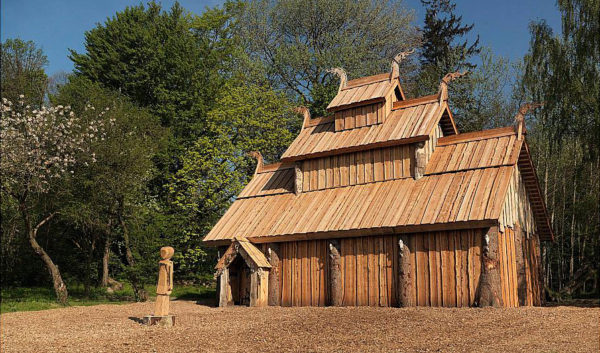
In 2017 the Anthropologist, Rane Willerslev, took up the position as director of the National Museum in Copenhagen. Known for his “Wild Thinking”, he soon took it upon himself to sweep just a bit of the cobweb under the floorboards of the venerable 18thcentury “Mansion of the Princes”, which houses the museum. Although severely hampered by financial cuts, he soon decided to make a home for a large permanent Viking exhibition planned to open in a couple of year’s time. As a precursor, he decided to do something about the dissatisfied tourists and proceeded to revamp the three rooms, where the Vikings had been carefully hidden from the view of the non-initiated. Also, the intention was probably to try out a more daring and “wild” approach before going full-scale at a later time.
To this end, he struck up collaboration with a kindred spirit, a wild designer, Jim Lyngvild, known for being an aficionado of Vikings as well as the leader of a pagan Norse Temple on the island of Fyen. As Lyngvild also runs a “Viking Business” selling design and cosmetics, he volunteered to be the creative designer of the exhibition for nothing except expenses. Quid Pro Quo!
The Exhibition
As it stands, the exhibition consists of three rooms, of which the first has hardly been touched. In one end, a phantasy recreation of a pagan temple like the one at Tissø has been attempted. The two following rooms present a mixture of a number of large oversized posters presenting “archetypal” Vikings as imagined by Jim Lyngvild. These are paired with a rather traditional exhibition of all that glitters – hoards and jewellery galore.
A couple of weeks ago the exhibition was launched with considerable fanfare. HBO was invited to the grand opening, which the company used to launch the second part of the fifth season of “Vikings”. As was anyone, who wished to pay for a ticket for the party. Obviously copied from the world of media and entertainment, the idea was to turn the old-fashioned and somewhat dreary and academic unveiling of a new museum exhibition into a show where the high and mighty might hobnob with the “influencers”, Viking re-enactors, and media people, while drinking “Wings of Orkney’ Cocktails based on “Highland Park Valkyrie”. At the event, the director, Rane Willerslev, obviously fought an uphill battle to blend at least some respectability into the happening. To say the least, Jim Lyngvild conquered the stage. The proceeding may be seen here below.
Uproar
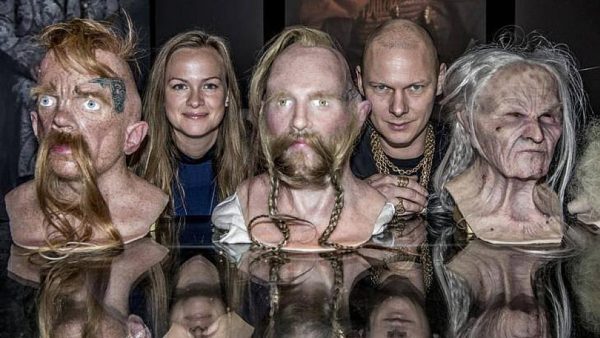
To say the least, the collaboration between the National Museum, HBO and Jim Lyngvild has been met with a massive bombardment of comments, reviews, and scorn, bordering on rage on the social media and elsewhere. One explanation is that the Museum just a few weeks before fired 30 people, among them at least one expert on Viking culture and history. Academia felt snubbed and with some rights. Another explanation, though, is the manifestly “wrong” rendering of the Vikings.
During the “proceedings” on Facebook, the photos of Jim Lyngvild has for instance been picked apart and shown to feature copies of artefacts from 3 to 400 years as well as romantic reproductions from the 19thcentury. Clad in sumptuous brocades and silks, there are no “stinking peasants” in the gallery – the expression is Jim Lyngvild’s. Also, the wax-heads are splendidly tattooed, while the filed and probably coloured teeth do not seem to feature. While we know, they maltreated their teeth, we don’t know whether the Vikings were actually tattooed. And on it went…
Review
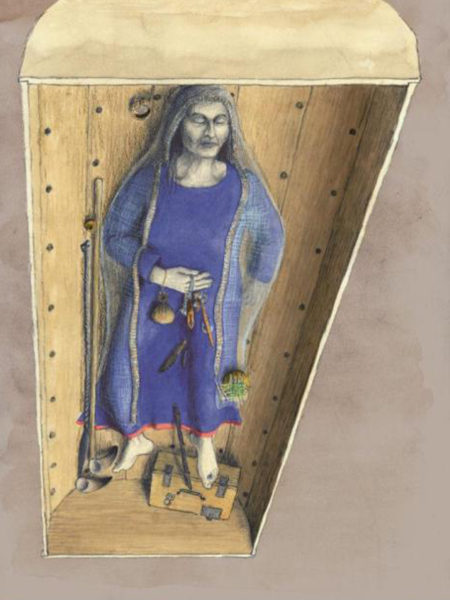
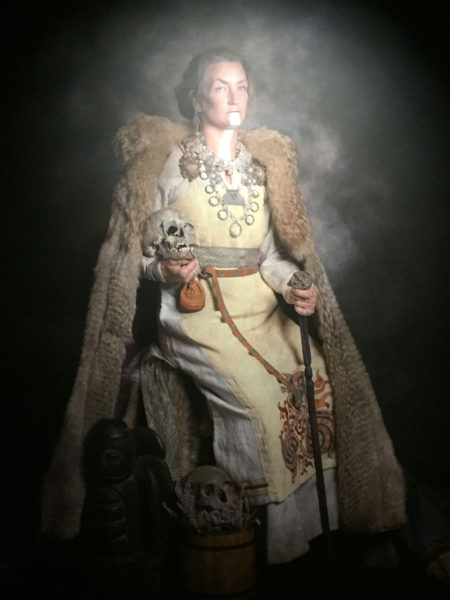
The question, though, is what we should think of the exhibition.
To begin with, we should not doubt that the intentions are all good. Rumour has it that an American tourist, who in 2013 saw a steel-skeleton exhibiting the fragments of the huge Viking ship, wreck 6, marvelled at the technological expertise of the Vikings in their ability to build ships of steel! Most people visit such exhibitions with no prior background or knowledge except what they may have gleaned from shows like HBO’s Vikings. To plunge them into a traditional exhibition of “things put upon things” will profoundly discourage them. It is like insisting to set up a modern concert house and then proceed to perform nothing but monophonic works when people have been accustomed to listen to grand polyphonic compositions. In the 21stcentury, we binge on Netflix and expect other forms of entertainment to live up to some of the kick, we get out of watching series like The Last Kingdom, The Tudors and Vikings.
So what to do? By creating a whacked-out vision of what a Viking might look like, one might imagine that a visitor would love also to open his or her eyes to what we think it really felt like living as a Viking?
Following down this path, though, the challenge becomes two-fold. The dreamy vision (like those of Jim Lyngvild’s) would at least have to be accompanied by a faithful reproduction of what we think Vikings really looked like (as best we can). Perhaps try and reconstruct some “heads” like for instance that of Gorm buried beneath the Jelling church. Also, we should at least have to try out old-fashioned models and reproductions, or better still, virtual reality to help people to a satisfying experience.
This has not been attempted. Instead, the curators have accompanied the grand posters and the Viking wax heads with collections of hoards of fabulous silver and gold ornaments, which no one with a normal eyesight will be able to enjoy properly. With no magnifiers in sight, and signs written with white on black and small typos in a murky atmosphere, I gave up studying the exhibited objects in detail. At least, we might ask, where is the app, with close-up photos of the exhibited treasures and fitted with proper explanations, fit for the uninitiated? In short, while Jim Lyngvild had been allowed his fun, the curators had apparently been swept aside or left clueless. Which we know, they are not.
In the years to come, the Viking experts at the museum will hopefully get their reprieve followed by a pardon, while Jim Lyngvild is allotted a less prominent role to play in the plans for the grand exhibition, which is in the pipeline. The work of Jim Lyngvild is both fascinating and hilarious. And visitors obviously enjoyed the fun. But it needs a serious dialogue partner in order for the National Museum of Copenhagen to fulfil its proper role, which is to tell the magnificent story of the Vikings, ca. 600 – 1080.
We live in hope…
VISIT:
Putting a Face to the Vikings
The National Museum in Copenhagen
Ny Vestergade 10, Copenhagen
HEAR MORE:
